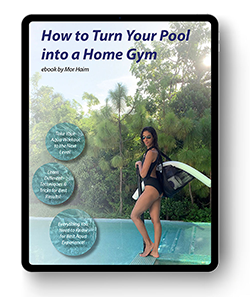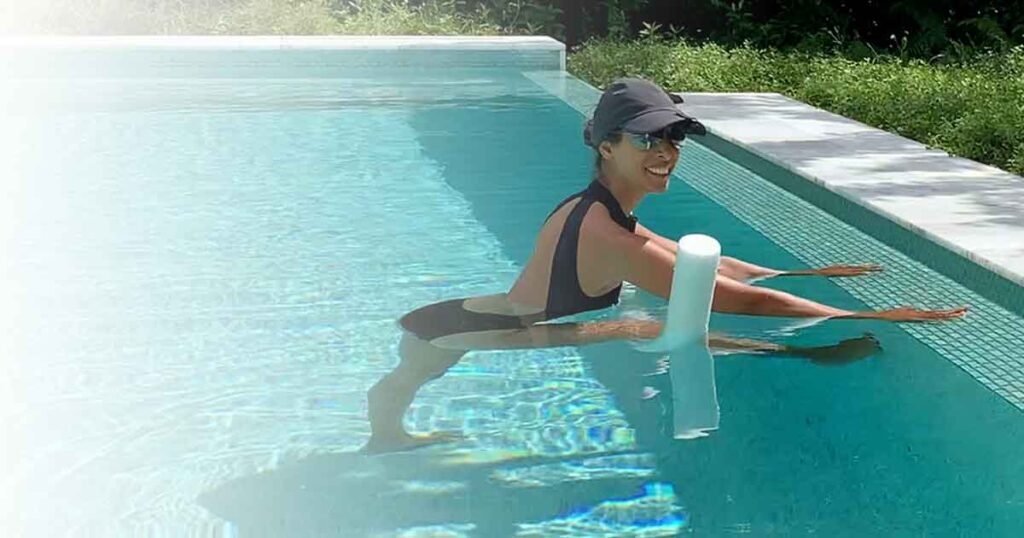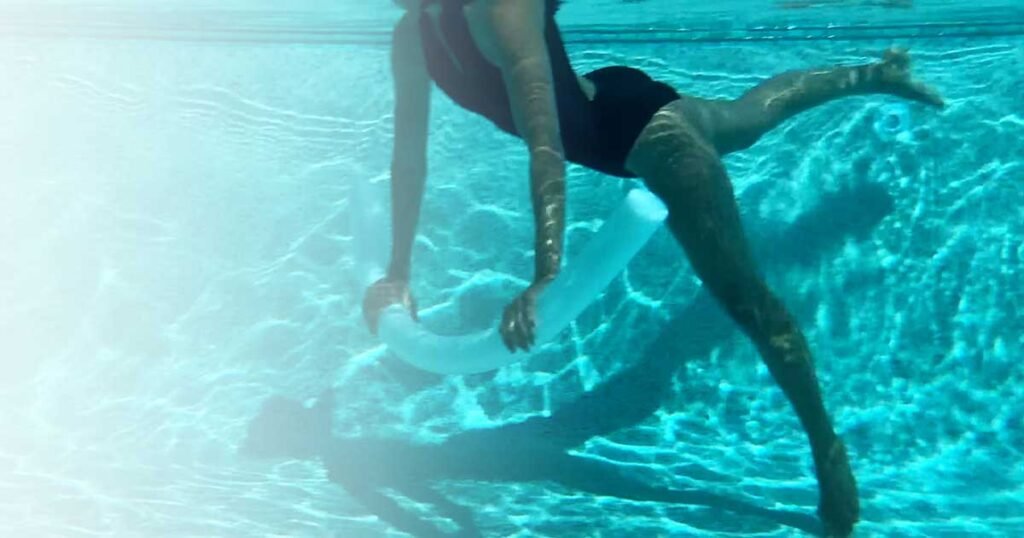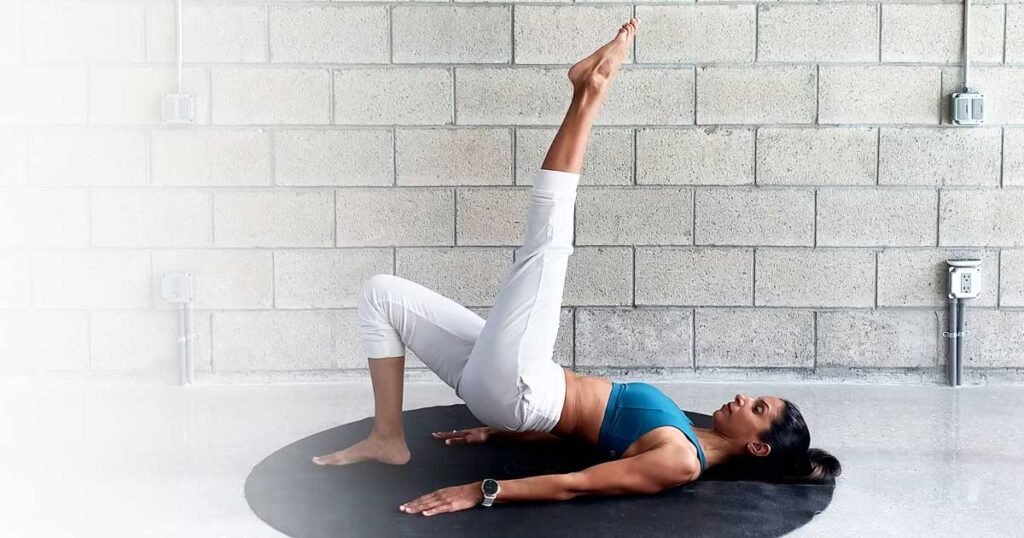Uncertain whether Joseph Pilates would have been pleased with the evolution of his method, but if he were still with us, I would have certainly extended an invitation for him to experience water pilates.
Water Pilates, while adapted to the aquatic environment, is rooted in the principles of the traditional Pilates method. It emphasizes core activation, alignment, and the strengthening of the body from the inside out.

What is Water Pilates?
Aqua Pilates is essentially a water workout inspired by the Pilates method. If you have prior experience with land-based Pilates, you’ll notice that the principles remain consistent. Some of the water-based exercise names may even sound familiar if you’ve taken mat Pilates or reformer classes before. However, the experience in the water introduces a completely new set of movements and sensations. The aquatic environment requires reevaluation and adaptation of the original land-based Pilates repertoire due to the different rules governing body movement in the water.
The Pilates method is very diverse. It uses mats and equipment like the Reformer, Cadillac, and chair. This variety allows for countless exercise variations. Water adds a new dimension to Pilates with an innovative approach. It’s a great complement to land workouts. It offers benefits such as low impact and resistance in all directions. Water supports various body positions. It provides hydrostatic pressure. It also has a soothing and cooling effect. For more details on these benefits, see here.
Applying Pilates Principles in Aquatic Settings
Many land-based fitness methods incorporate the aquatic world to enjoy its numerous benefits. The Pilates method is just one of them and surprisingly, it fits exceptionally well in the water. Several Pilates principles can indeed be applied and effectively supported in aquatic environments.
- Flow of movement in water is characterized by a continuous, graceful, and fluid sensation, where one movement seamlessly transitions into another. The water’s viscosity offers resistance while also providing support as you maintain a smooth flow. Interestingly, stopping or attempting to hold the body still in water requires considerable effort and control, leading to the next Pilates principle.
- Control – The water remains in constant motion, creating instability when attempting to maintain body alignment during exercises. When performing larger motions in the water, which often involve traveling, we further test our stability and control. The water’s movement, referred to as water’s inertia, opposes the body’s movement and direction. To sustain proper alignment and pace, the body must remain stable against the water’s resistance pushing in opposing directions.
- Centering – In the water, you must engage the core muscles, which are situated at the center of your body, often referred to as Joseph Pilates’ “Powerhouse.” When these core muscles are not actively working, stability decreases, leading to increased wobbliness. Furthermore, when incorporating buoyant equipment into specific exercises, centering becomes even more crucial, as failing to control the movement and engage the core muscles can result in flipping over.
You can find more information about the Pilates principles of work in my other article “So What is Pilates Anyway?”

Who is it for?
Water Pilates, like any other aquatic workout, is ideal for those who:
- Want to challenge themselves differently and enjoy the numerous benefits of working out in the water while cross-training with their land-based workouts.
- Prefer not to sweat but love being in the water.
- Are in the rehabilitation phase of an orthopedic injury. When submerged in water, they can engage in controlled exercises with no impact on their joints, supporting their rehabilitation process and reducing the risk of recurring injuries.
- Are out of shape or overweight and cannot comfortably exercise on land while bearing their full weight. In the water, they can exercise vigorously with additional benefits such as a reduced risk of chronic diseases, improved body composition, increased stamina, strength, endurance, and relief from depression and anxiety.
- Are pregnant women or in the postpartum phase. Specific benefits of exercising in the water during pregnancy can be found here.
As a Pilates and aqua fitness trainer with many years of experience, I constantly search for innovative methods to modify exercises and develop fresh variations. Why? It’s to stimulate the body differently, preventing muscle stagnation, sustaining interest and motivation through the introduction of new movements and skills, establishing a pathway to more challenging exercises, and addressing orthopedic injuries that may limit traditional exercise execution. Aqua fitness, especially aqua Pilates, can provide an excellent solution for achieving these goals.
To sums thing up…
Water Pilates combines the core principles of traditional Pilates with the unique benefits of aquatic environments. It provides a versatile and effective workout option for individuals of all fitness levels. Whether you’re looking to challenge yourself differently, recover from an injury, or simply enjoy the buoyant and soothing nature of water, water Pilates offers a holistic fitness experience that promotes strength, stability, and overall well-being. So, consider diving into water Pilates to explore a new dimension of health and fitness.
And here’s a great YouTube video with me demonstrating a few Pilates exercises in the pool, using a noodle.



